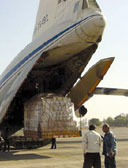 |
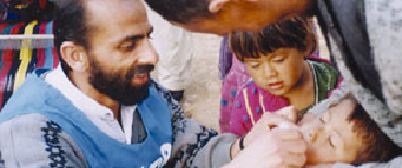 |
 |
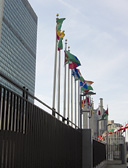 |
|||
 |
Association of Medical Doctors of Asia, in short AMDA,
is an international organization dedicated to realize a
peaceful world community through humanitarian efforts in
medical health care sector. Founded in Okayama City, Japan,
in 1984. AMDA is a non-governmental, non-profit organization
with an international network of 30 chapters and 47 collaborating
organizations around the world.
AMDA provides emergency medical aid to people affected by natural as well as man-made disasters. With its special strength in the medical and health sectors, AMDA also implements mid- to long-term social development projects helping people in their community building process. AMDA has worked in more than 50 countries in Asia, Africa, Latin America and Europe in collaboration with governments, UN agencies, such as UNHCR, WHO, WFP, UNOCHA, and other specialized agencies and institutions.
For more details, please refer to AMDA's website
In 1981 he set up his own clinic in Okayama-City, presently known as Asuka International Clinic. He is married to Dr. Tomoko Suganami, an otorhinolaryngologist and Vice-President of Asuka International Clinic. A dedicated physician by profession, Dr. Shigeru Suganami is probably more known as the President of AMDA, Association of Medical Doctors of Asis, an avocation he has pursued since his younger days.
In the summer of 1963, Suganami experienced a memorable
encounter with a picture from one of the World War II photo
collections.
In the striking picture a young solider
lay dead on a beach, his head half buried in the sand.
Suganami,
in his second year at senior high school at that time, stood
motionless in front of the photo completely dismayed and
shocked at the merciless and solitary death of a young man
of his age
It was just one casualty out of countless civilians and soldiers
victimized by the War, but this encounter has become the
root of his career as a medical doctor and his avocation
in humanitarian causes that consequently led to the
formation of AMDA. It was also this very picture which
stirred his interest for Asia.
The picture came from the collections of photos taken from World War II which involved many Asian countries as well as the South Sea Islands. During his fourth year at Okayama University Medical School, he embarked on a ten-month trip to South-East Asia and Middle East. His first stop was Japan Leprosy Mission for Asia near Agra, India, where he received first-hand experience in international humanitarian efforts. After the completion of his training he toured through 10 countries and was deeply impressed by the diversity and dynamism of these countries. At the same time, the appalling sight of people in poverty and agony resulting from conflicts, natural disasters, and social system has been deeply embedded in his memory and remains so until this day.
In the years following his return from the trip, Suganami
became engrossed in organizing medical expedition teams to
Pagoda Farm located along River Kuwai, Thailand. The
teams, consisting of young Japanese medical professionals
and others interested in humanitarian efforts, offered medical
services to people on the farm. It was also during
this period Dr. Suganami realized the importance of traditional
medicine that can be incorporated with the western medicine
for more effective treatment. He played pivotal role
in several medical research missions in this field as well.
In 1979, Dr. Suganami, accompanied by two medical students,
rushed to Thailand to extend a helping hand to Cambodian civil
war refugees. Despite their good intentions and enthusiasm,
the sudden appearance of a young medical team from Japan was
not met with welcoming arms. The circumstances did not
even allow them a single opportunity to work for the refugees. Through
this disappointing incident Dr. Suganami learned the importance
of networking with various organizations and people in Asia
for the purposes of gathering information and implementing
humanitarian assistance. It dawned on him that if medical students
in Asia were to join hands in humanitarian efforts, such network
would present limitless opportunities. Friendship and
trust nurtured during school days of medical professionals
may lead to effective coordination for future humanitarian
efforts. This thought has led to the formation of the
Asian Medical Students Conference(AMSC) in 1980 followed by
the inception of Association of Medical Doctors for Asia in
1984. Later on the name changed to Association of Medical
Doctors of Asia reflecting its growth of operation encompassing
many countries outside Asia.
AMDA provides emergency medical aid to people affected by natural as well as man-made disasters. With its special strength in the medical and health sectors, AMDA also implements mid- to long-term social development projects helping people in their community building process. AMDA has worked in more than 50 countries in Asia, Africa, Latin America and Europe in collaboration with governments, UN agencies, such as UNHCR, WHO, WFP, UNOCHA, and other specialized agencies and institutions.
For more details, please refer to AMDA's website
AMDA believes in the spirit of “sogo-fujo”
Sogo-fujo is a social value deeply rooted in the traditional Japanese close-knit community life. The essence of “sogo-fujo” lies in the fact that humanitarian assistance is not regarded as a single, one-sided occurrence, rather it is seen in a cycle of reciprocating assistance giving a broader perspective of time and scope.“Sogo-fujo” is something
we are all born with regardless of race, religion, and culture.
“Sogo-fujo” is bilateral. People in need
of help today may be at the opposite end of assistance with
the change of time and circumstances.
“Sogo-fujo” leads to respect and trust for each
other. Human dignity must be preserved at all times,
above all else.
AMDA believes in partnership based on local initiative.
AMDA strives to support people affected by disasters and economic distress on their road to recovery establishing a true partnership with special emphasis on local initiative. The spirit of “sogo-fujo” creates a true partnership based on respect and trust for each other. In the process of recovery, local people’s own will to better their lives becomes the driving force for boosting our common efforts. It is also the local people who provide us with the most reliable information based on their system of values leading to a true and effective partnership. Association of Medical Doctors of Asia, in short AMDA, was established in 1984 by Dr. Shigeru Suganami, in Okayama, Japan. Since then AMDA has grown in size and scope actively engaging in emergency relief as well as in integrated community development all over the world.How it started
Dr. Shigeru Suganami was born on Dec. 29th, 1946, in Hiroshima Prefecture, Japan. He graduated from Okayama University, Medical School in 1977 with Ph.D. in public health.In 1981 he set up his own clinic in Okayama-City, presently known as Asuka International Clinic. He is married to Dr. Tomoko Suganami, an otorhinolaryngologist and Vice-President of Asuka International Clinic. A dedicated physician by profession, Dr. Shigeru Suganami is probably more known as the President of AMDA, Association of Medical Doctors of Asis, an avocation he has pursued since his younger days.
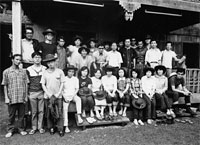 |
The picture came from the collections of photos taken from World War II which involved many Asian countries as well as the South Sea Islands. During his fourth year at Okayama University Medical School, he embarked on a ten-month trip to South-East Asia and Middle East. His first stop was Japan Leprosy Mission for Asia near Agra, India, where he received first-hand experience in international humanitarian efforts. After the completion of his training he toured through 10 countries and was deeply impressed by the diversity and dynamism of these countries. At the same time, the appalling sight of people in poverty and agony resulting from conflicts, natural disasters, and social system has been deeply embedded in his memory and remains so until this day.
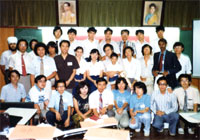 |
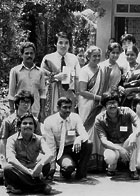 |

